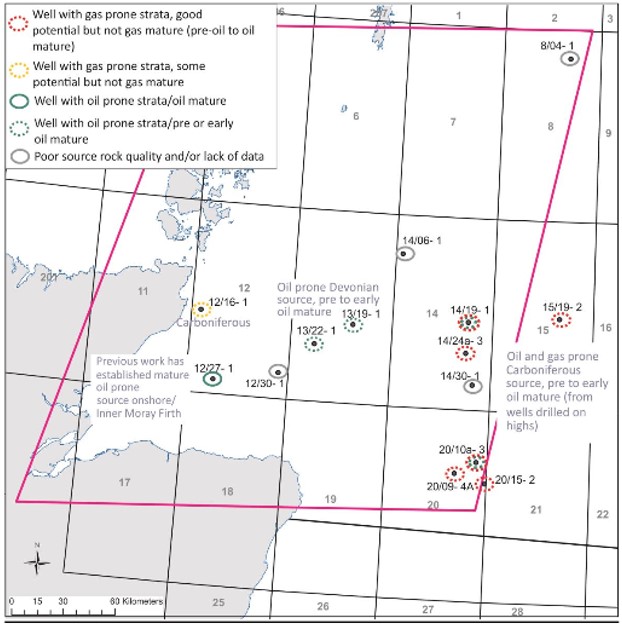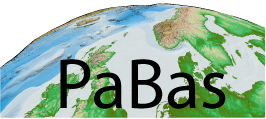Devonian
Only a few wells have drilled into the Devonian on the NOCS. The source rock quality measured on shales from the Embla Field show these at best to be Type III, gas prone source rocks (Pedersen et al. 2006). Lacustrine sediments with oil-prone source rock quality where deposited in Devonian time in the Orchadian Basin (Duncan and Buxton, 1995; Marchall and Hewett, 2003). The Devonian sourced, solid bitumen seen in the wells on Embla (see figure below) may have been sourced from these lacustrine sediments (Ohm et al. 2012; Abay et al. 2014).

Biodegraded and waterwashed Palaeozoic oil are here seen in Coreplugs from fractured rhyolites from the Embla Field
Carboniferous
Carboniferous source rock intervals are demonstrated ranging from lacustrine type I kerogens in Scotland to gas prone coals (Norwegian, Danish and UK sectors of the North Sea) (Pedersen et al. 2006). The Svane well drilled in the Tail End Graben discovered gas/condensate at depth of 5400-5900m. The gas shows dC13 values comparable with values from the Carboniferous charged Groningen Field. The heavy isotope values of the condensate suggest a coaly source (Ohm et al. 2006).
Permian
Pedersen et al. (2006) analyzed samples of Kupferschiefer from well NO 25/10-2 and from DK Felicia-1A. The analyses of 25/10-2 reveal an oil-prone Type II source rock, whereas the samples from the Felicia well are dominantly gas-prone. The main problem with the Kupferschiefer is its thickness, which is usually thin (1m) in most known places. However, thicknesses up to 15-20m are reported from the Norwegian North Sea and UK North Sea wells (Glennie et al. 2003). In internal studies at the University of Stavanger, oils with distinct carbonate signatures have been observed. It is speculated that these originate from Permian sources.
General Paleozoic
Matapour and Karlsen (2017) using age specific biomarkers state that Paleozoic derived oils are present in wells 17/3-1 and in 2/4-17. The British Geological Survey published a summary map of well locations with geochemical data for Devonian and Carboniferous strata (see figure below). This clearly demonstrates that the Paleozoic section of the Orcadian basin has the potential to charge traps in the North Sea.

Summary map of wells with geochemical data for Devonian and Carboniferous strata in the Orcadian study area. The pink polygon is the Orcadian study area. Map from the British Geological Survey.

